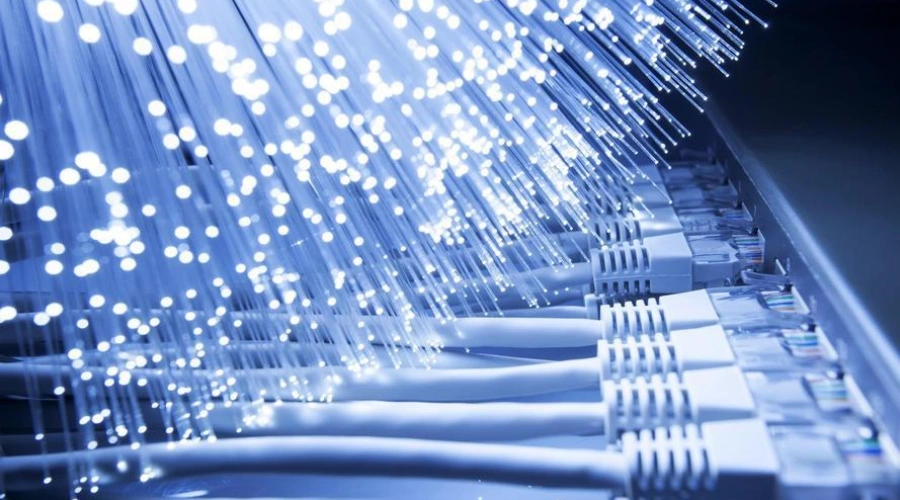
Unveiling the secrets of fiber-optic communication: from weak to brilliant!
Publish Time: 2025-03-17
In the tide of the information age, fiber-optic communication has become an important pillar of modern communication with its high efficiency and speed. From the initial weak light to today's brilliant light, the development of fiber-optic communication is full of challenges and breakthroughs.The idea of fiber-optic communication can be traced back to 1966, when Chinese scientist Charles Kao published a paper that theoretically proved that the loss limit of transparent glass fiber can be reduced to below 20dB/km, and predicted that this material can be used for communication. This paper is like a morning star, pointing the way for subsequent fiber-optic communication research. In 1970, Corning successfully pulled out an optical fiber with a loss of 20dB/km, verifying Charles Kao's theory. At the same time, Bell Laboratories in the United States invented a semiconductor laser using gallium arsenide as a material. This laser is small in size and high in efficiency, and is very suitable for use in fiber-optic communication systems. These technological advances have made fiber-optic communication move from theory to reality.In 1972, the transmission loss of optical fiber was further reduced to 4dB/km, marking the official opening of the era of fiber-optic communication. During this period, multimode optical fiber began to be developed and applied. Multimode optical fiber can transmit multiple light modes at the same time and is suitable for short-distance communication needs. However, as the communication distance increases, the limitations of multimode optical fiber gradually become apparent. In order to achieve longer distance and higher quality communication, single-mode optical fiber came into being.Single-mode optical fiber has higher transmission capacity and longer transmission distance, and is the mainstream technology of modern optical fiber communication. In 1981, the first generation of commercial single-mode optical fiber G.652 came out, and its low dispersion characteristics enabled it to support higher-speed signal transmission. Subsequently, higher-performance single-mode optical fibers such as G.653 and G.654 were successfully developed, further improving the performance of optical fiber communication.In addition to the improvement of the optical fiber itself, the development of light sources and detection devices is also crucial. The performance of semiconductor lasers and photodetectors has been continuously improved, which has greatly improved the reliability and efficiency of optical fiber communication systems. At the same time, the emergence of optical amplifiers has solved the problem of optical fiber signal attenuation, making long-distance relay-free transmission possible.Entering the 21st century, optical fiber communication has entered a stage of rapid development. With the popularization of the Internet and mobile communications, data traffic has exploded, and higher requirements have been placed on the bandwidth and capacity of communication networks. In order to meet this demand, wavelength division multiplexing (WDM) technology came into being. WDM technology can transmit optical signals of multiple wavelengths in one optical fiber at the same time, greatly improving the transmission capacity of optical fiber.In the future, optical fiber communication will continue to develop in the direction of high speed, large capacity, long distance and intelligence. The construction of all-optical networks will become a future development trend. By increasing the capacity of a single wave and upgrading routing switching nodes, optical fiber communication will be able to better meet the society's demand for data. At the same time, with the continuous advancement of technology, the cost of optical fiber communication will gradually decrease, making it widely used in more fields. Looking back on the development of optical fiber communication, we can see the efforts and wisdom of countless scientists and engineers. It is their unremitting exploration and innovation that have made optical fiber communication from the initial idea into reality and continuously promoted the advancement of communication technology. Today, we live in an era of highly developed information, and optical fiber communication has become an indispensable part of our lives. Whether it is the Internet, telephone or television, the support of optical fiber communication is indispensable. Looking into the future, fiber optic communications will continue to lead the development of communication technology and bring us a more convenient and efficient communication experience.
Looking back on the development of optical fiber communication, we can see the efforts and wisdom of countless scientists and engineers. It is their unremitting exploration and innovation that have made optical fiber communication from the initial idea into reality and continuously promoted the advancement of communication technology. Today, we live in an era of highly developed information, and optical fiber communication has become an indispensable part of our lives. Whether it is the Internet, telephone or television, the support of optical fiber communication is indispensable. Looking into the future, fiber optic communications will continue to lead the development of communication technology and bring us a more convenient and efficient communication experience.


